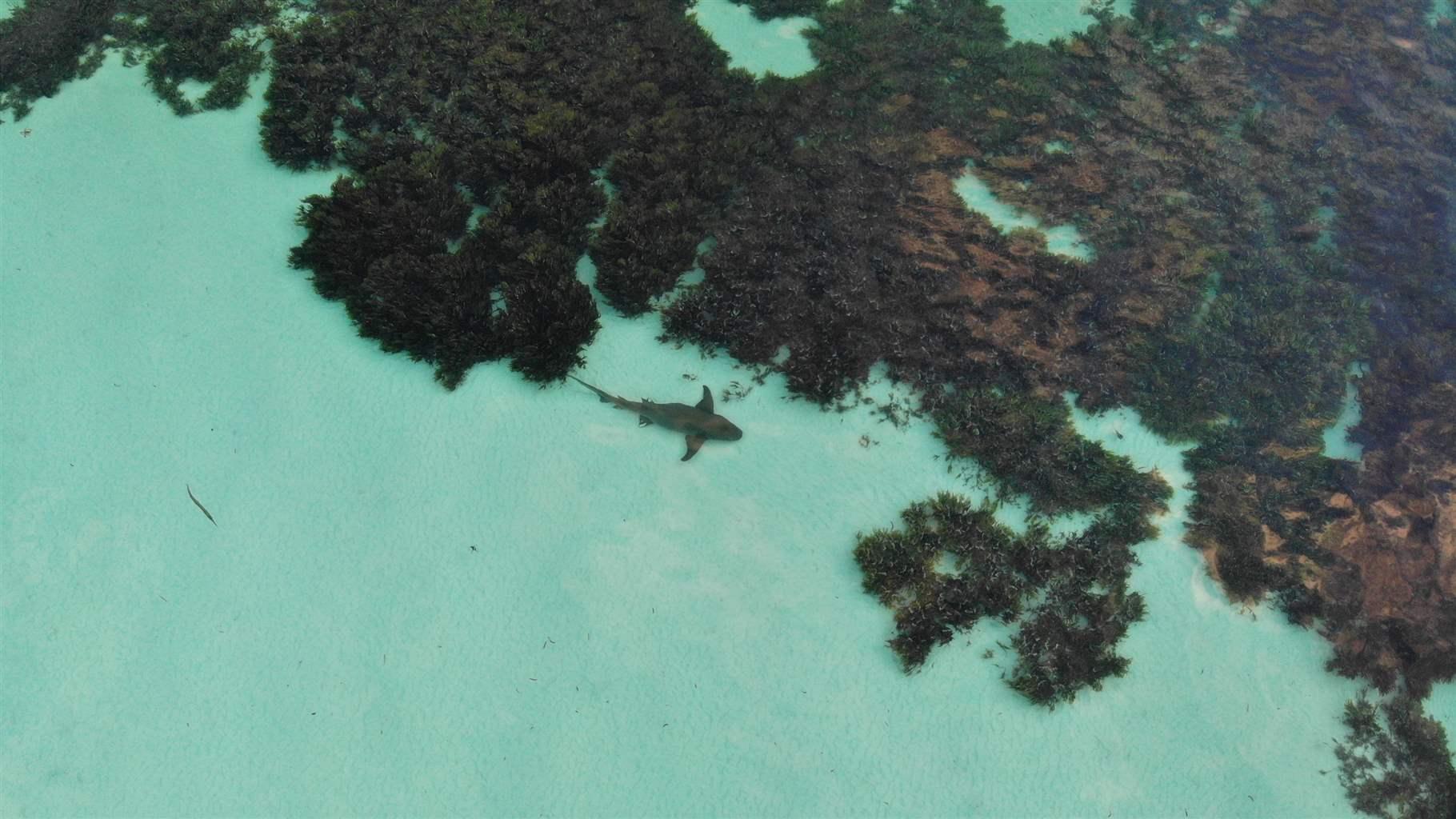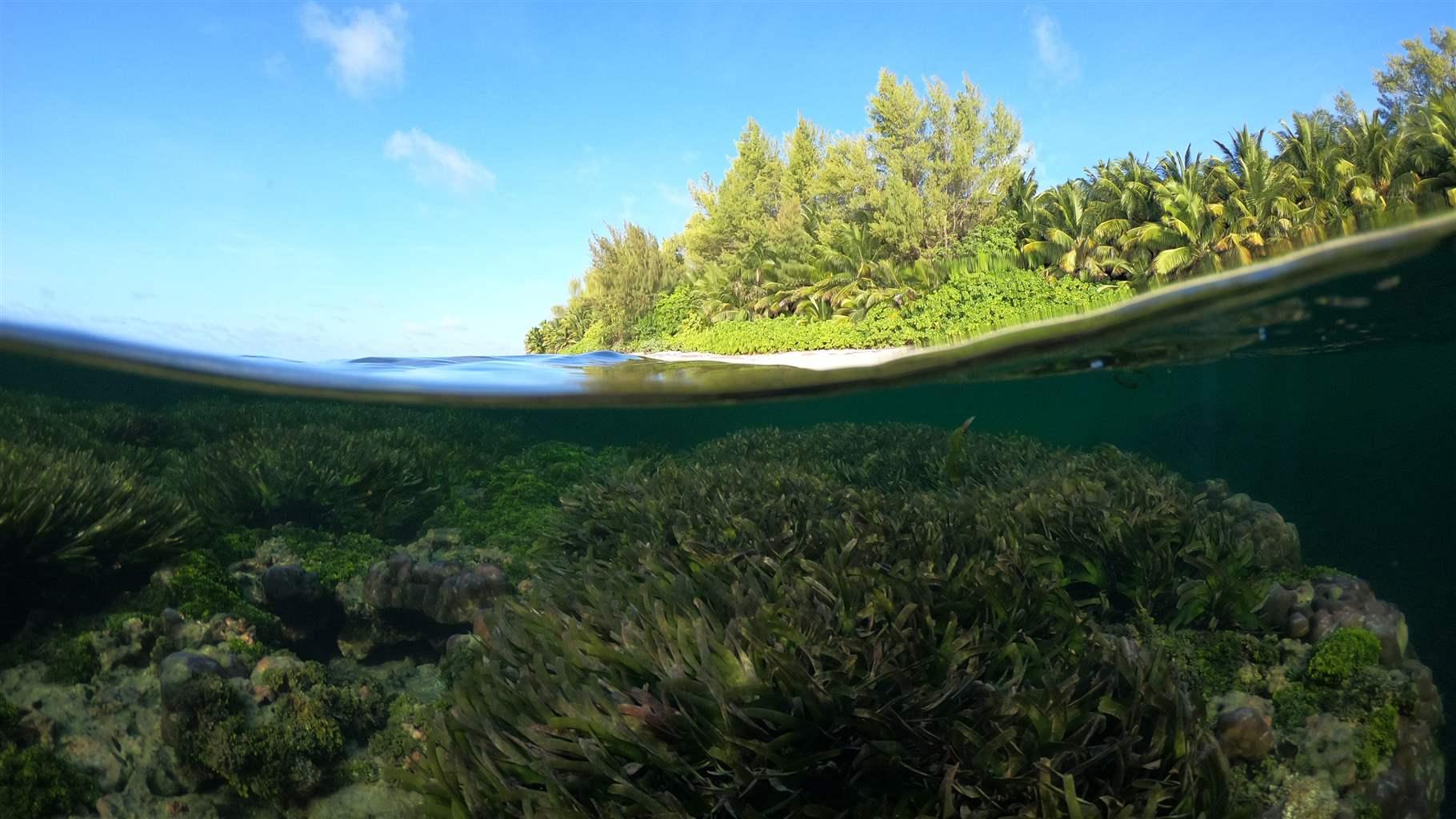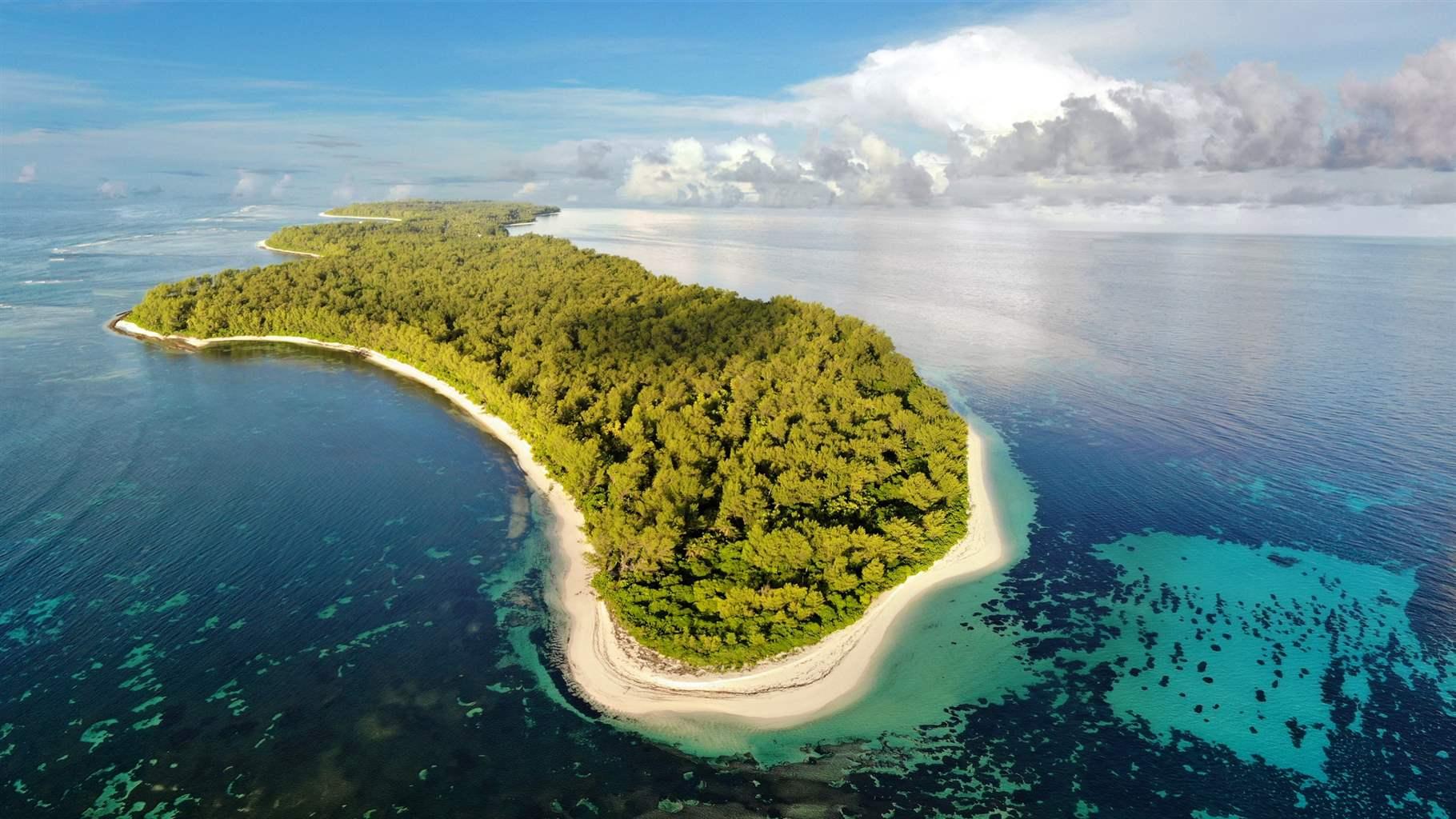Seychelles Champions Coastal Wetlands in Climate Commitments
Seagrass at heart of the country’s next steps to protect the ocean

Situated almost 1,000 miles off the East African coast, the 115 islands that form the Seychelles archipelago contain one of the largest and most biologically diverse marine ecosystems on the planet. Endangered dugongs, turtles, sharks, and a wealth of other marine life inhabit these rich waters.
The people of Seychelles, or Seychellois, have long recognized the importance of protecting their seas, both for this biological diversity and for the ocean’s role in sustaining people and livelihoods. Seychelles was one of the first countries to commit to protecting at least 30% of its own waters—encompassing innovative conservation finance models such as “debt for nature swap” and blue bonds—and is now at the forefront of international negotiations to agree upon a global target of protecting 30% of the world’s ocean.
Today, the country is embarking on its latest chapter in ocean leadership: protecting coastal wetlands such as seagrass within its next nationally determined contribution (NDC) in order to help deliver on the goals of the Paris Agreement.
Every five years parties to the Paris Agreement submit updated domestic commitments to combat climate change through an NDC. Coastal wetlands such as seagrass, mangrove, and saltmarsh ecosystems are currently the only nature-based marine solutions that can measurably contribute to a country’s emissions reductions, as recognized by the Intergovernmental Panel on Climate Change’s methodologies.
In addition to their quantifiable mitigation value, coastal wetlands provide a wealth of adaptation benefits to climate change, such as helping to buffer shorelines and frontline communities from severe storms and flooding. These benefits for people, biodiversity, and the climate—across the full spectrum of mitigation, adaptation, and broader aspects of resilience—make coastal wetlands a “triple win” solution.
Seychelles is one of several countries considering the role that nature-based solutions can play within these collective efforts to achieve global reductions in greenhouse gas emissions and adapt to the impacts of climate change. In particular, the Government of Seychelles is exploring the role that seagrass protections can play in its next NDC.
“Seagrasses typify the kind of habitats we need to better protect—for people, nature, and the climate,” said Wills Agricole, principal secretary for energy and climate change. “Seychelles has a proud history of ocean leadership and big ambitions to further this standing. Working with partners, we will remain at the cutting edge of understanding and protecting our blue carbon ecosystems.”
While the broader benefits of protecting seagrass ecosystems are well understood, as compared to other “blue carbon ecosystems” such as mangrove and saltmarsh, their submerged nature poses challenges to mapping specific locations and determining their carbon storage potential. To support the Government of Seychelles’ goal of protecting their seagrass ecosystems, Pew is working alongside partners at the University of Seychelles, the University of Oxford, Seychelles Conservation and Climate Adaptation Trust (SeyCCAT), The Nature Conservancy (TNC), Island Conservation Society, and a range of local stakeholders to apply the latest remote-sensing methods and carbon assessment techniques to develop a field-validated map of the extent of seagrass meadows and associated carbon stocks in Seychelles waters.
“Pioneering new scientific approaches that further our understanding of the benefits our ocean provides reaffirms Seychelles’ global commitment to ocean protection,” said Angelique Pouponneau, CEO of SeyCCAT. “Our hope is that this work will not only be central to Seychelles’ NDC, but can also provide knowledge that can be shared globally.”
As the Government of Seychelles refines specific targets and goals for the NDC, its attention to mapping and protecting seagrass meadows shows a clear desire to remain at the leading edge of global ocean conservation.
Thomas Hickey is a senior officer and Stacy Baez is an officer with The Pew Charitable Trusts’ protecting coastal wetlands and coral reefs project.















